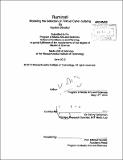| dc.contributor.advisor | Henry Lieberman. | en_US |
| dc.contributor.author | Dinakar, Karthik | en_US |
| dc.contributor.other | Massachusetts Institute of Technology. Dept. of Architecture. Program in Media Arts and Sciences. | en_US |
| dc.date.accessioned | 2013-01-23T20:23:46Z | |
| dc.date.available | 2013-01-23T20:23:46Z | |
| dc.date.copyright | 2012 | en_US |
| dc.date.issued | 2012 | en_US |
| dc.identifier.uri | http://hdl.handle.net/1721.1/76572 | |
| dc.description | Thesis (S.M.)--Massachusetts Institute of Technology, School of Architecture and Planning, Program in Media Arts and Sciences, 2012. | en_US |
| dc.description | Cataloged from PDF version of thesis. | en_US |
| dc.description | Includes bibliographical references (p. 91-96). | en_US |
| dc.description.abstract | The scourge of cyber-bullying has received widespread attention at all levels of society including parents, educators, adolescents, social scientists, psychiatrists and policy makers at the highest echelons of power. Cyber-bullying and it's complex intermingling with traditional bullying has been shown to have a deeply negative impact on both the bully as well as the victim. We hypothesize that tackling cyber-bullying entails two parts - detection and user-interaction strategies for effective mitigation. In this thesis, we investigate the problem of detecting textual cyber-bullying. A companion thesis by Birago Jones will investigate use-interaction strategies. In this thesis, we explore mechanisms to tackle the problem of textual cyber-bullying using computational empathy - a combination of detection and intervention techniques informed by scoping the social parameters that underlie the problem as well as a socio-linguistic treatment of the underlying socially mediated communication on the web. We begin by presenting a qualitative analysis of textual cyber-bullying based on data gathered from two major social networking websites and decompose the problem of detection into sub-problems. I then present Ruminati - a society of models of models involving supervised learning, commonsense reasoning and probabilistic topic modeling to tackle each sub-problem. | en_US |
| dc.description.statementofresponsibility | by Karthik Dinakar. | en_US |
| dc.format.extent | 96 p. | en_US |
| dc.language.iso | eng | en_US |
| dc.publisher | Massachusetts Institute of Technology | en_US |
| dc.rights | M.I.T. theses are protected by
copyright. They may be viewed from this source for any purpose, but
reproduction or distribution in any format is prohibited without written
permission. See provided URL for inquiries about permission. | en_US |
| dc.rights.uri | http://dspace.mit.edu/handle/1721.1/7582 | en_US |
| dc.subject | Architecture. Program in Media Arts and Sciences. | en_US |
| dc.title | Ruminati : modeling the detection of textual cyber-bullying | en_US |
| dc.title.alternative | Modeling the detection of textual cyber-bullying | en_US |
| dc.type | Thesis | en_US |
| dc.description.degree | S.M. | en_US |
| dc.contributor.department | Program in Media Arts and Sciences (Massachusetts Institute of Technology) | |
| dc.identifier.oclc | 823864002 | en_US |
